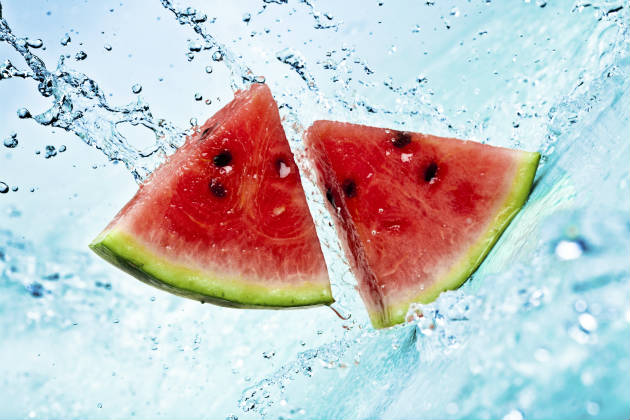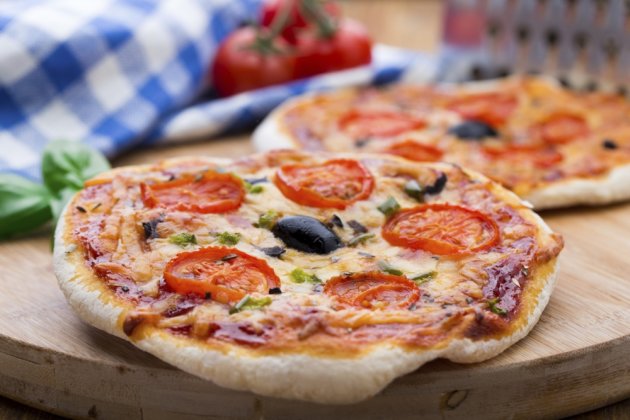Coconut water has revolutionised the healthy drinks market since its introduction in the mid-2000s, but its time in the sun could be over with the introduction of a range of super-healthy competitors. We’ve rounded up five of the best new healthy waters that are so good for you, you’ll never look at H2O in the same way again.

Watermelon Water
If you can’t stomach the distinctive taste of Coconut Water, look no further than Watermelon Water for a sweeter alternative. As they’re 90% water, watermelons are a great source of hydration, and their juice is also abundant in antioxidants to help battle harmful free radicals in your body.Made with the pressed juice from a watermelon, Watermelon Water is absolutely packed full of healthy nutrients, including more potassium in a single 250ml bottle than you’ll find in a whole banana.
This high potassium level is great news if you love working out – in a recent study published in the Journal of Agricultural and Food Chemistry, Watermelon Water was found to relieve post-workout muscle soreness and decrease recovery time.
Watermelon Water is also perfect for anyone looking for a quick jump-start in the bedroom. Watermelon is a rich source of citrulline, an amino acid that boosts your libido and improves general cardiovascular and immune functions.
Maple Water
With the introduction of Maple Water, have we seen the end of Coconut Water’s monopoly over the healthy water market? The numbers don’t lie – Maple Water contains half the sugar (5g per 250ml) of Coconut Water and half the calories (20 per 250ml).Perhaps best of all, it tastes a whole lot better as well. Forget the thick texture and overly sweet flavour of maple syrup. Maple Water is practically the same consistency as regular tap water, and has a barely noticeable subtle sweetness to it.
Tapped straight from maple trees, Maple Water is 100% natural, and contains no less than 46 essential amino acids, vitamins, minerals and prebiotics. It boasts high levels of natural electrolytes, which help to replenish the minerals that your body loses when you sweat. Its combination of calcium, iron and manganese is also great for bone health.
Aloe Vera Juice
Aloe Vera has long been used as a topical treatment for skin irritations – the ancient Egyptians were big fans over 5,000 years ago, referring to it as the ‘plant of immortality’. Recently however, it’s been discovered that the watery gel from inside Aloe Vera has plenty of internal benefits as well.Aloe Vera Juice is created by separating the watery gel found inside the plant from the pulp that surrounds it. Just like when it’s applied to skin, the juice has an anti-inflammatory effect, which means it helps to sooth internal inflammation issues like IBS. This is down to a phytosterol found in Aloe Vera called ‘beta-sitoserol’, which is also used as a supplement by runners who want to reduce muscle swelling.
Despite its natural healing properties, the strong taste of Aloe Vera Juice isn’t up everyone’s street when drank on its own. To offset this, trying adding a dash of lemon juice.
Birch Tree Juice
Traditionally drunk as a healing tonic in eastern European countries, in recent years the watery sap from inside birch trees has emerged as a new healthy living super-drink called Birch Tree Juice.Since then, birch tree harvesting has been refined to an exact science to make sure the product is as nutritious as possible. The sap is collected in spring, when mineral and micronutrient levels in the trees are at their highest, meaning you’re left with a drink that ticks pretty much every nutrient box there is.
In 2003, scientists at the University of California investigated the effects of a group of compounds called saponins, which are found in birch trees. They discovered that this group of chemicals lower cholesterol levels by preventing the absorption of ‘bad’ cholesterol in the body.
Willow Water
Willow Water was first discovered in the 1100s by monks in the north west of England. They noticed the healing effects of an underground spring that they found, and promptly declared it to be holy water.Nearly a millennium later, and science has finally given us an answer as to why this particular type of water is so good for you. As the water runs into the spring, it picks up mineral deposits from ancient willow trees, including a compound called salicin. Salicin is a natural anti-inflammatory found in willow bark, which provides relief for minor aches and pains and boosts the immune system.
Salicin also combines with the high levels of calcium in Willow Water to give your skin a boost, as well as strengthen your bones and teeth.
According to the folks over at Willow, all it takes is six weeks of drinking Willow Water for your skin to be noticeably healthier. If you don’t feel positively glowing and radiant after that month and a half, they’ll give you an extra six weeks’ worth of water completely free.https://uk.lifestyle.yahoo.com/h2o-just-got-interesting-5-new-waters-try-080510917.html




